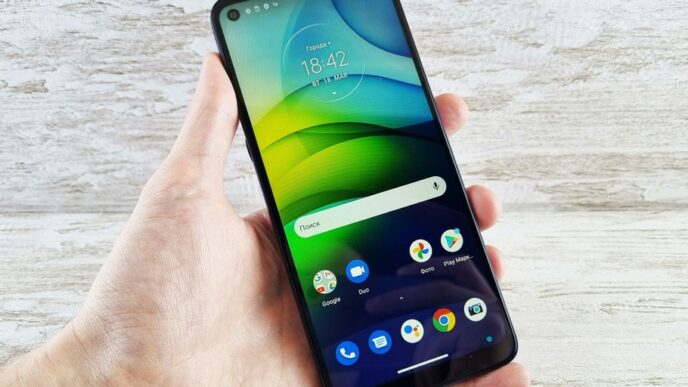From online classes and digital textbooks to interactive learning programs, technology has revolutionized the way students learn today. Gone are the days when teachers would rely solely on chalkboards and textbooks to impart knowledge. With a plethora of innovative tools at their disposal, modern-day educators can now engage students in ways that were once unimaginable. In this blog post, we’ll explore how technology is changing education for students everywhere – from improving accessibility to creating personalized learning experiences – ushering in a new era of education that promises to transform the lives of young learners around the world.
Introduction: How Technology is Transforming Education
It is no secret that technology has drastically changed the way we live and work. In fact, it has become so integral to our lives that it is hard to imagine living without it. The same can be said for education. Technology has transformed the way education is delivered and received. Students are no longer confined to the traditional classroom setting. They can now learn anywhere and at any time thanks to the power of technology.
There are a number of ways in which technology is changing education.
One of the most significant changes is the way information is accessed and shared. In the past, students had to rely on textbooks and teachers to learn new information. Today, students can simply turn to their laptops or smartphones and access a wealth of information with just a few clicks. This has made learning more interactive and engaging for students.
In addition, technology has also made assessment and feedback more immediate and effective. Teachers can now give students real-time feedback on their performance using apps or online tools. This helps students learn more effectively and enables teachers to identify areas where students need extra help.
Technology is also changing how educators collaborate with each other and with their students. With online platforms such as Google Classroom, teachers can easily share resources and assignments with their colleagues or students. This makes it easier for educators to plan lessons and deliver instruction that meets the needs of all learners.
Benefits of Technology in Education
Technology has revolutionized the field of education, providing new opportunities and resources for students around the world. Through the use of technology, students can now access a wealth of information and resources that were previously unavailable. In addition, technology can help to level the playing field for students from different backgrounds and experiences.
Some of the most significant benefits of technology in education include:
Increased Access to Information and Resources
With the internet and other digital tools, students now have unprecedented access to information and resources. No longer do they have to rely on their teachers or parents to find out about something – they can just look it up themselves. This increased access has the potential to greatly enhance learning and understanding.
Improved Communication and Collaboration
Technology also allows for improved communication and collaboration between students and teachers, as well as between classmates. Students can easily share their work with others, get feedback, and receive help when needed. This can lead to a more interactive and engaging learning experience overall.
Enhanced creativity and critical thinking skills
Through the use of technology, students can now explore their creativity in new ways. They can also develop critical thinking skills by considering different perspectives and using analytical tools. These enhanced skills can benefit them both inside and outside of the classroom setting.
Challenges of Technology in Education
One of the challenges of technology in education is the digital divide. This refers to the gap between those who have access to technology and those who do not. According to a 2016 report from the Pew Research Center, “about one-in-four households with school-age children do not have a high-speed broadband connection at home.” This can put students who do not have access at a disadvantage when it comes to doing homework and keeping up with their peers.
Another challenge is that even when students do have access to technology, they may not know how to use it effectively for learning. A 2018 study from the Organization for Economic Cooperation and Development found that “students’ skills in using technology for learning are often lower than their reading and mathematics skills.” This means that teachers need to provide students with guidance on how to use technology tools in order to maximize their learning potential.
There is a concern that too much reliance on technology can lead to unhealthy screen time habits and social isolation. A 2016 survey from Common Sense Media found that “nearly half of teens feel they’re addicted to their mobile devices.” This is something that educators need to be aware of and work to mitigate.
Examples of Technology Used in the Classroom
As we enter a new era of education, it is important to consider how technology is changing learning for students everywhere. Technology can be a powerful tool to engage and motivate students, as well as provide them with new opportunities to learn. Here are some examples of technology that can be used in the classroom:
Learning Management Systems (LMS): LMSs are online platforms that can be used to deliver course content, track student progress, and communicate with students and parents. Some popular LMSs include Schoology, Edmodo, and Blackboard.
Digital Textbooks and eBooks: With digital textbooks and eBooks, students can have access to their course materials at any time, from any device. This can be particularly helpful for students who are visual or auditory learners, or who have difficulty reading print material.
Online Quizzes and Assessments: Online quizzes and assessments can provide instant feedback to teachers and students on student understanding. They can also be used to differentiate instruction based on student need.
Collaborative Tools: Collaborative tools such as Google Docs, Padlet, and Socrative allow students to work together on projects in real-time, no matter where they are located. This is a great way to promote student engagement and collaboration skills.
Social Media: Social media platforms like Twitter and Facebook can be used in the classroom to connect with other classrooms around the world,
Tools to Help Facilitate Learning with Technology
When it comes to education, technology has been a game-changer. It has completely revolutionized the way we learn, and continues to do so at an ever-increasing rate. There are now more tools and resources available to help facilitate learning with technology than ever before.
One of the most important tools for facilitating learning with technology is a learning management system (LMS). An LMS is a software platform that allows educators to create and deliver digital course content, track student progress, and manage assessments. There are many different LMS platforms available, such as Blackboard, Canvas, and Moodle.
Another tool that can be used to facilitate learning with technology is an e-learning platform. E-learning platforms provide a central location for all of your digital course materials, making it easy for students to access everything they need in one place. Popular e-learning platforms include Schoology and Google Classroom.
There are a number of mobile apps that can be used to facilitate learning with technology. These apps allow students to access course materials on their smartphones or tablets, making it easy to learn on the go. Some popular mobile learning apps include Khan Academy and Quizlet.
The Impact of Technology on Student Outcomes
Technology has changed the landscape of education and learning for students everywhere. In the past, students would have to rely on books and teachers to learn new information. However, with the advent of technology, students can now access a wealth of information at their fingertips without even leaving their seat. This has led to a new era of education where students are able to learn at their own pace and in their own time.
There are a number of ways that technology has changed learning for students.
One way is by providing access to a wealth of information. With just a few clicks, students can now find out about anything they want to know. This means that they can learn about any topic that interests them, at any time of day or night.
Another way that technology has changed learning is by making it more interactive. Gone are the days when students would sit in silence and listen to lectures. Now, thanks to technology, students can actively participate in their learning by asking questions, providing feedback, and collaborating with other students online. This makes learning more fun and engaging, and it helps ensure that concepts are better understood and retained.
Technology has also made assessment and feedback more immediate and effective. In the past, teachers would have to wait until the end of a unit or semester to give feedback on student progress. However, with technology such as Learning Management Systems (LMS), teachers can track student progress in real-time and provide immediate feedback. This helps ensure that students are
Strategies for Integrating Technology into the Classroom
With the ubiquity of technology in our everyday lives, it’s no surprise that integrating technology into the classroom is becoming more and more common. There are a variety of ways to do this, and the best approach depends on the resources available and the goals you want to achieve.
One popular strategy is using computers or tablets for whole-class instruction. This can be helpful for visual learners or those who need a little extra help following along. You can also use technology for small-group work or one-on-one instruction. This allows students to get more individualized attention and move at their own pace.
Another way to integrate technology into the classroom is by using it as a supplement to traditional instruction. For example, you might use an online video platform to supplement your lectures with engaging videos or use a digital flashcard app to help students study for exams.
No matter what approach you take, there are a few things to keep in mind when integrating technology into your classroom:
Set clear goals for what you want students to achieve. Technology should be used as a tool to support your instructional goals, not as an end in itself.
Make sure students have adequate opportunity to practice using the technology before incorporating it into assessments or other high-stakes activities.
Be mindful of equity issues when using technology in the classroom. Some students may not have access to the same devices or Internet service at home, so it’s important to consider how everyone will be able
Conclusion
Technology is revolutionizing the way students learn. With access to a wealth of online resources, virtual reality experiences, and interactive tools, there are endless possibilities for personalized learning and exploration. By embracing these new technologies, educators can help their students engage with material more deeply than ever before – opening up exciting opportunities for collaboration and creativity that weren’t available in traditional classrooms. The future of education looks bright!













